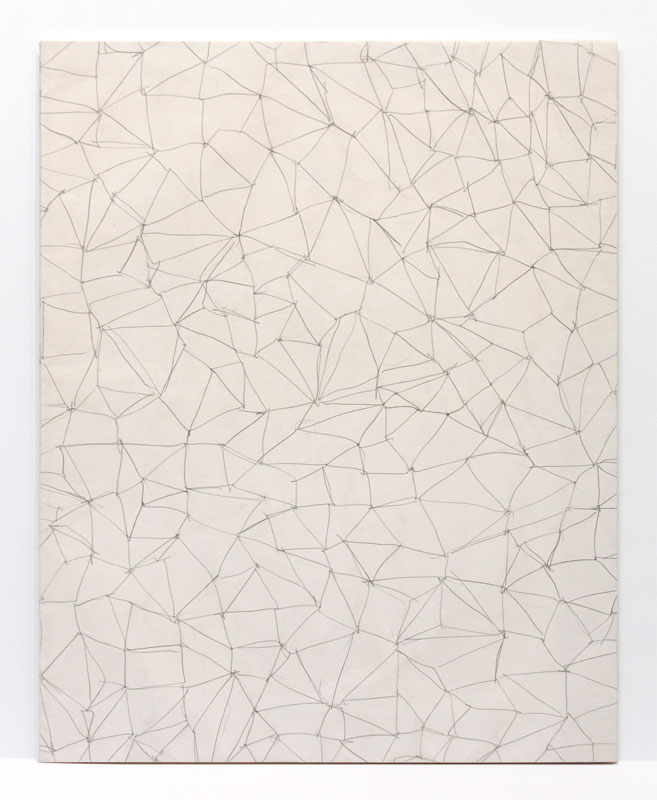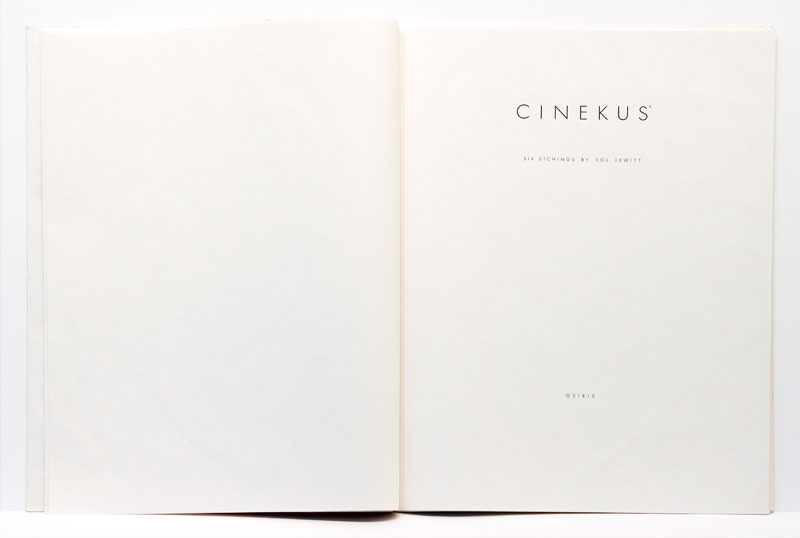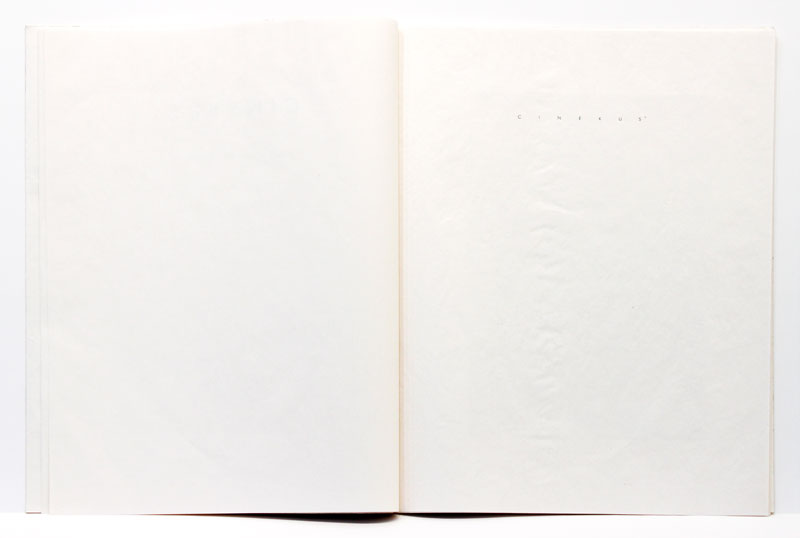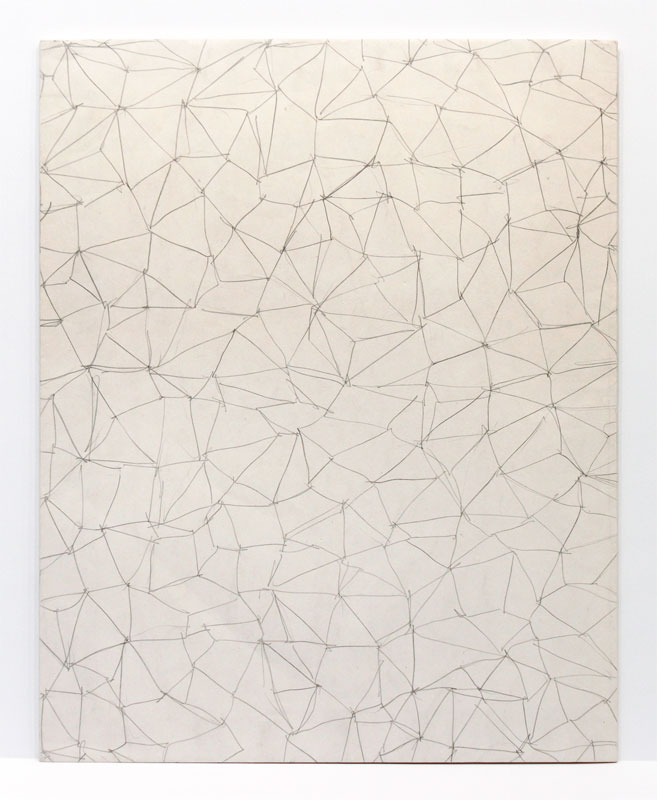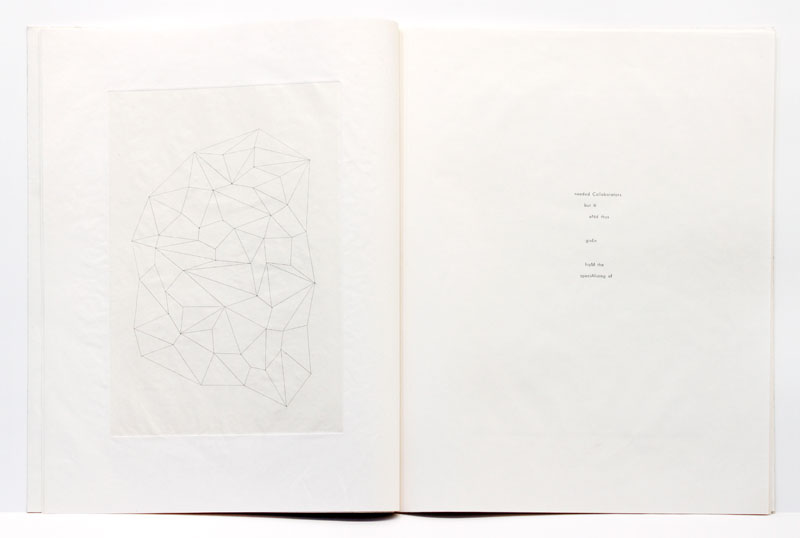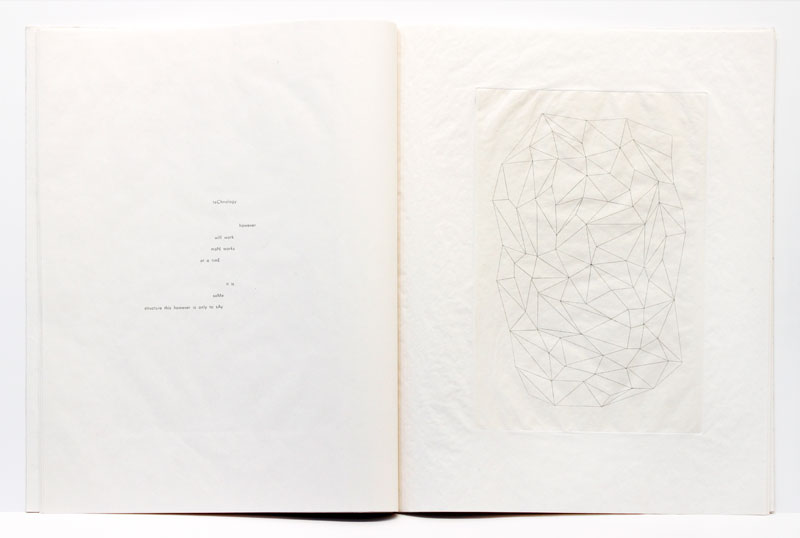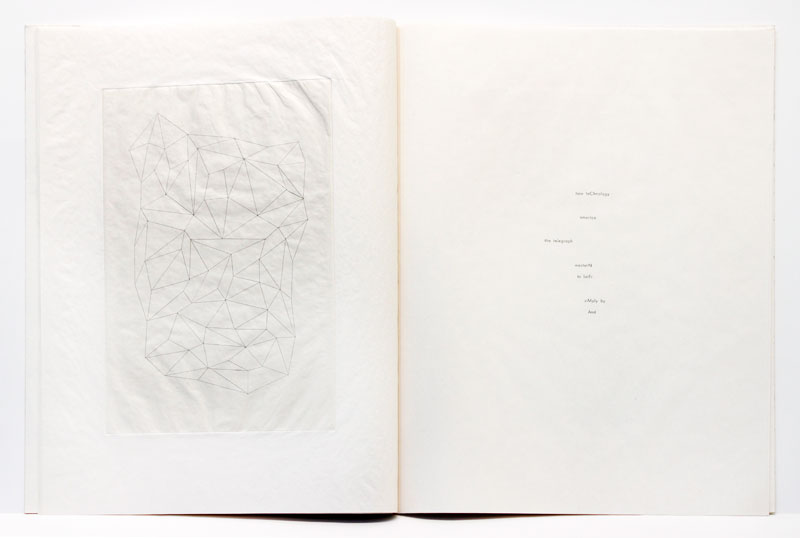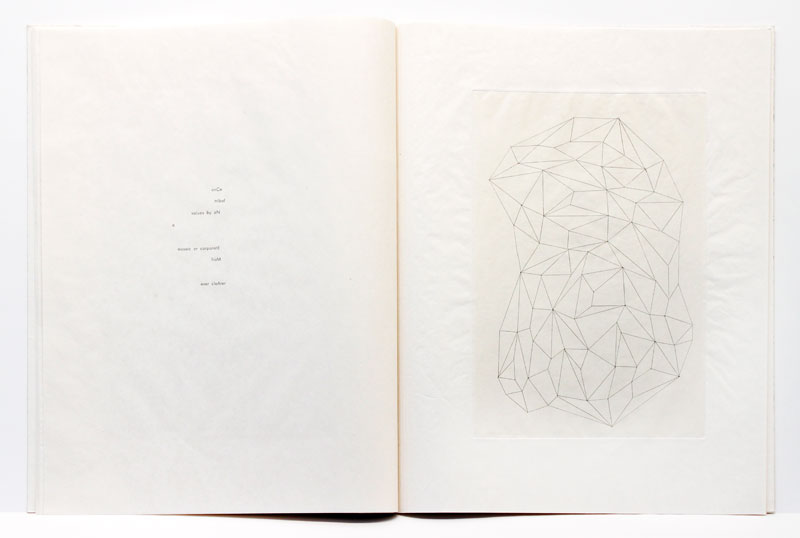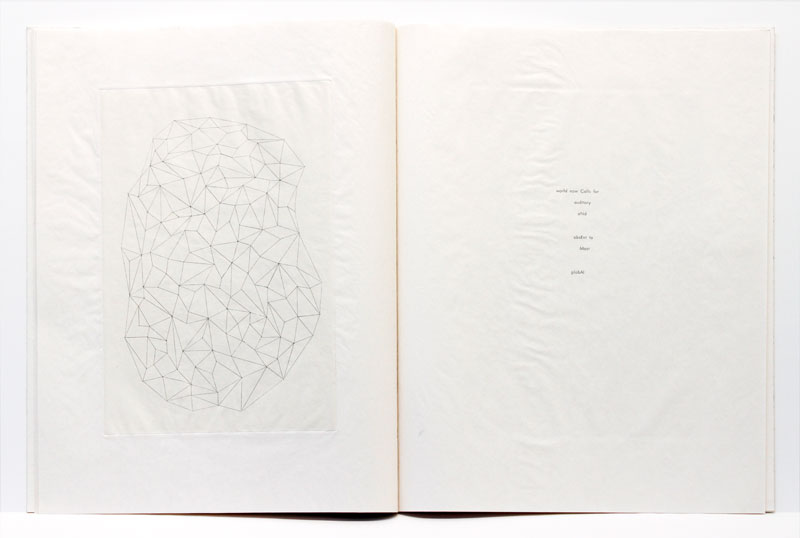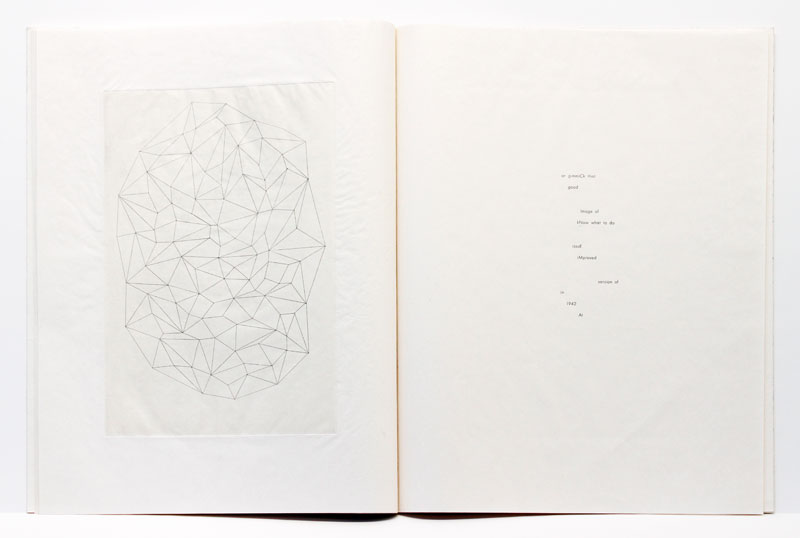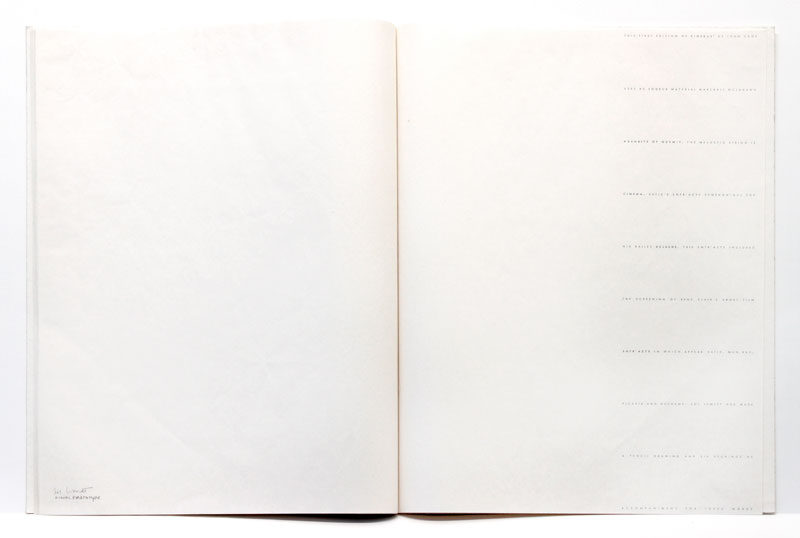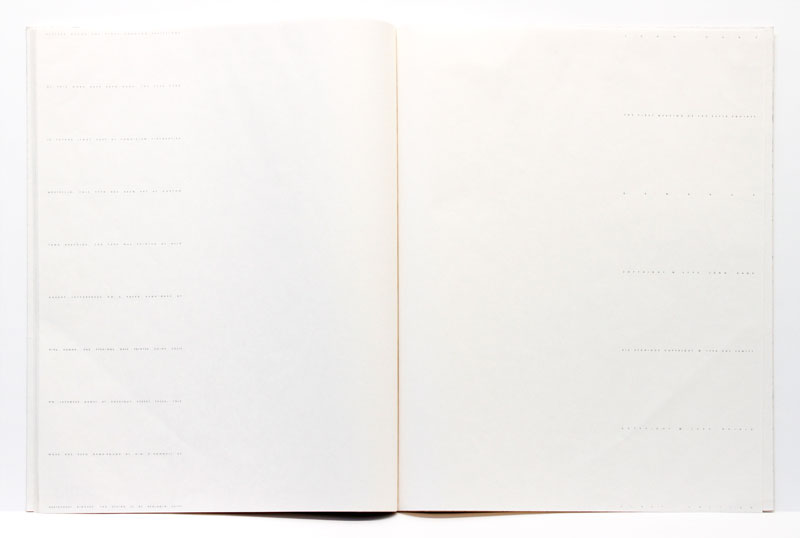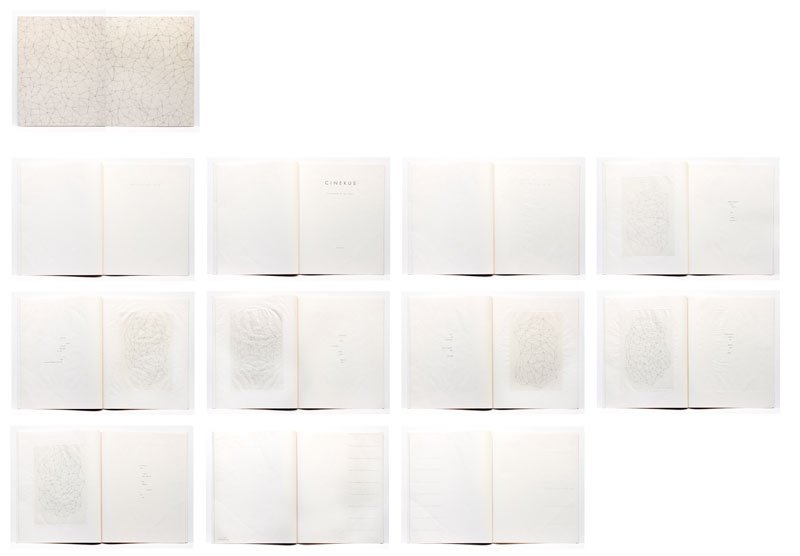
- Catalogue Raisonné #:
- 1995.10
- Title:
- Cinekus (from The First Meeting of the Satie Society)
- Medium:
- Set of six line etchings
- Date:
- 1995
- Image Size:
- 17.8 × 11.9 inches (45.1 × 30.2 cm)
- Paper Size:
- 25 × 19 inches (63.5 × 48.3 cm)
- Type of Paper:
- Gompi
- Edition Size:
- Edition of 24 - 18 books + 6 unbound
- Publisher:
- Osiris Editions, New York, New York
- Printer:
- Clarey Nelson, Providence, Rhode Island
- Additional Info:
Previously catalogued as E-69
Medium: set of six line etchings, each set being in a unique order and/or orientation, all encased in a hand-drawn folio, all with text by John Cage
Originally an edition of 24 - 18 books + 6 unbound but the final form editioning of the entire project (with six other artists) ended with an edition of 7 pairs of bound and unbound sets and 2 bound sets without unbound sets.
Each bound set has a cover that is in fact a unique drawing by Sol LeWitt with a protective coating on it. Each set is arranged in a unique way - there is no order and no top or bottom for each print, so each set had a unique order.
"The First Meeting of the Satie Society" is a project by John Cage that engaged his chance methods and collaboration with Merce Cunningham, Mell Daniel, Jasper Johns, Sol LeWitt, Robert Rauschenberg, Benjamin Schiff and Cy Twombly.
It was originally conceived of as an edition of 24 - 18 books + 6 unbound but the final form of the editioning of the entire project ended with an edition of 7 pairs of bound and unbound sets and 2 bound sets without unbound sets.
The First Meeting of the Satie Society (with images by Jasper Johns, Cy Twombly, Robert Rauschenberg, Sol Lewitt, Mell Daniel, John Cage, Benjamin Shiff and Henry David Thoreau)
"The First Meeting of the Satie Society" was "conceived by John Cage and realized through the application of programs written at Cage's request by Jim Rosenberg and Andrew Culver (1985-86), this homage to the composer Erik Satie consisted of texts (presents) by writers who knew and loved Satie's work (or who might have if they had existed in a time period that enabled them to know it), restructured by two computer programs" (from http://www.well.com/~couey/artcom/leonardo91.html)
"What is brought together here is not a single text, but a collection of materials for performance, reading, visual examination, etc, some of them musical, most of them literary...[this work] is not a play, though there are three characters and there is incidental music." (from Cage's performance notes)
This work is a renga, a mesostic using five source texts. The five mesostic source texts became a single renga by letting I Ching chance operations determine which of the five provides the first line, which the second, etc." (from performance notes)
This is a collection of materials conceived as presents for Erik Satie. In it the composer stages three characters: Cage (represented by a reader), Satie (the audience) and a cabaret singer with accompanist. Their performance is combined with music of Satie (e.g. Vexations or parts of Musiques d'Ameublement, played simultaneously), pleyed in another part of the same building.
The texts consist of "kus", "writings through" and a "renga". The "kus" (short mesostics) are: Cinekus (6 kus, based on Marshall McLuhan's "Agenbite of outwit" with Sol LeWitt); Mesdamkus (17 kus based on "Finnegans Wake" by James Joyce); Musi(c)kus (14 kus based on "Whistlin is did" by Chris Mann); Relakus (7 kus based on "Marcel Duchamp, Notes" with Jasper Johns) and Sonnekus (9 kus, published seperately).
The 'writing through' is Writing through the Essay "On the Duty of Civil Disobedience".
The 'renga' is Variations and Interludes with Variations.

